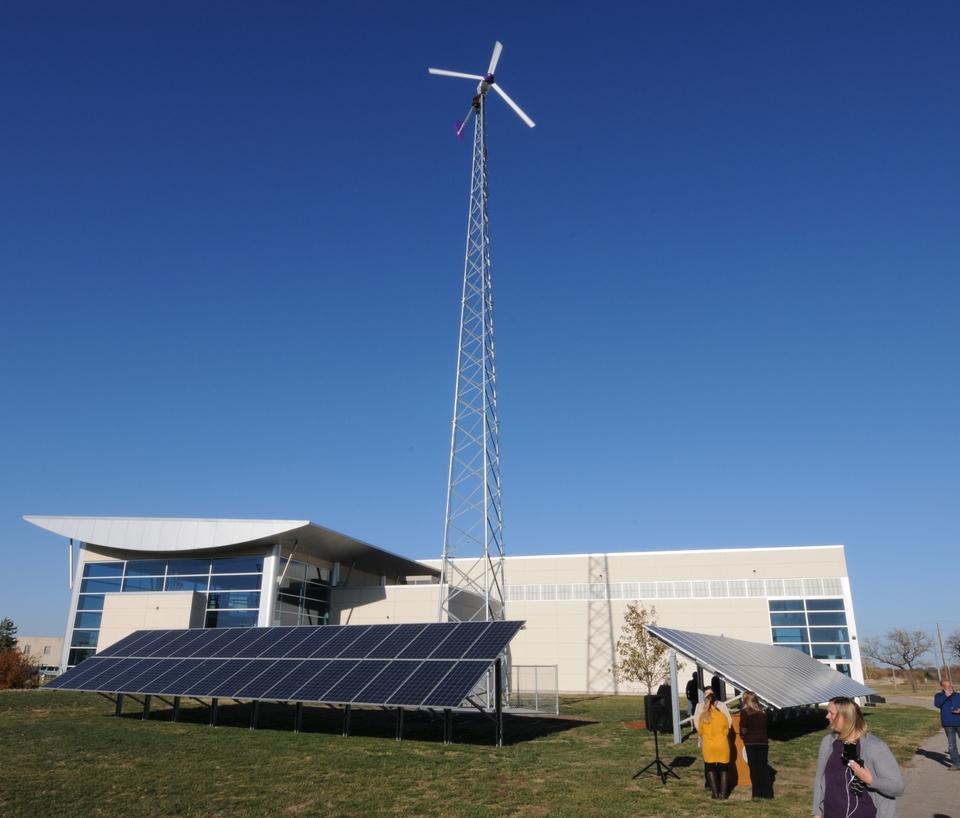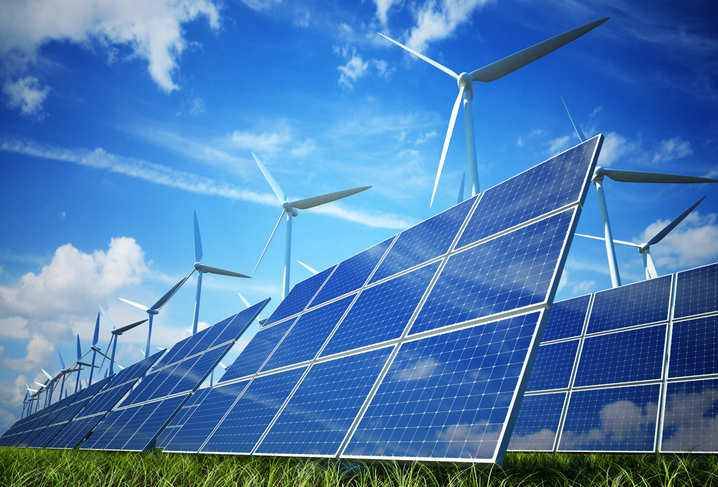
November 09
Polytech first to use both wind, solar energy
New courses, more than $146,000 in energy and operational savings a year and a more-modern campus are the expected benefits of a Kansas State University Polytechnic Campus program.
On Wednesday afternoon, school officials unveiled the latest campus addition — a 100-foot wind turbine with a 180,000-pound concrete base and two solar panels, or a photovoltaic system.
CEO and Dean Verna Fitzsimmons said K-State Polytech has become the only college in Kansas using both solar and wind energy.
“We’ve been looking at what’s most efficient and best for our campus to reduce energy consumption and this helps us to accomplish that,” she said. “We are also doing our part to make our campus and community more environmentally friendly. I believe we’re doing what’s right, not just for today, but for the future.”
The wind turbine and solar panels, which were installed two weeks ago, will be used to power the Student Life Center while being interlocked on Westar’s grid.
The wind turbine begins to produce energy at 5 mph, said interim facilities manager Dave Shelton.
“At certain times, it will exceed the power needed in the building (Student Life Center). That actually makes the meter run backwards,” he said.
School officials can track the savings and energy being generated on a website.
As of 4:30 p.m. Thursday, since being installed, the solar panels have saved the school more than $220; saved 44 trees, and reduced the amount of carbon in the atmosphere by nearly 12,000 kilometers.
Yearlong process
Shelton said the energy saving program began in late 2016 with an audit by Energy Solutions Professionals.
“The audit focused on the energy saving opportunities we had on campus,” he said. “We wanted to find a way to make our energy systems easier and simpler.”
In February, the university was awarded a $2.8 million bond issue by the Kansas Development Finance Authority, said Dennis Stugelmeyer, director of finance.
In addition to the wind turbine and solar panels, the bond issue allowed for LED lighting on the interior and exterior of all campus buildings, sidewalks and parking lots; programmable WiFi thermostats; new toilets and reduced irrigation across campus; new, high-efficiency boilers and chillers for the Tech Center East, Harbin Hall and Schilling Hall, and a new variable refrigerant system in Tech Center West.
The chillers and boilers were installed in early spring by ESP.
Costs are offset
“We had several needs and this project gave us an opportunity to replace equipment that was well past its lifetime,” Fitzsimmons said. “We now have new chillers and boilers across the campus that make it safer and more comfortable for our students and staff and that’s a focus of ours. We’ve had to always update different systems. Our systems are now in pretty good shape for a while.”
Stugelmeyer said bonds will be paid back through expected energy savings.
“We are supposed to pay back roughly $230,000 a year over a 15-year period. That will come from the energy savings and being able to reduce the cost of maintenance on campus facilities,” he said.
Fitzsimmons said ESP promised a minimum of $146,000 in annual energy savings upon installation, but “we’re expecting to save more.”
The two alternative energy sources also are expected to reduce maintenance costs by $50,000 a year, Fitzsimmons said.
Once the bonds are paid off, Fitzsimmons said, “those savings can be reallocated to other needs of the campus for other improvements.”
Additionally, the new energy efficient campus may allow for more degree programs focused on renewable energy, she said.
“Perhaps I am most excited about seeing how the solar panels and the wind turbine can be used as a teaching tool. ... So it also lends itself to the polytechnic style of education,” she said. “We will study what we have now and as we begin to understand more about it, our possibilities will become endless.”






